Electricity in South Australia has been in the news too much over the past year or more – high prices in Q3 2016 following on from some remarkable pricing patterns (NEM-wide) in Q2, and then the blackout of 28th September, the event of 1st December, and the smaller* load shed event of 8th February (*not to diminish how it affected those concerned). These actual outcomes have layered onto the longer-lasting undercurrent of shorter-term politicisation (by our current crop of abysmal politicians on all sides) of what is a complex and challenging energy transition that we have embarked upon.
Is it any wonder that these have, thus, contributed to what seems (at least to me) to be a lowering in the general level of collective emotional and cognitive resilience with respect to electricity supplies in South Australia.
1) What I’ve been seeing…
Here’s one example from social media this morning:
There were other examples that I have seen yesterday and today – where the use of “blackout” will be effective in stimulating click-throughs, but perhaps could be too easily misinterpreted (i.e. on many occasions LOR notices are issued, but on the vast majority the market responds to these intended signals by the AEMO).
2) What the numbers say…
A quick look at NEM-Watch at 08:50 today shows that prices are indeed higher in South Australia this morning than in other regions – but this, in and of itself, is highly usual at the regular times when wind generation is at the lower end of its range (see this animation of the natural “yin and yang” of wind to understand the different pieces of the same puzzle, if you don’t already):
Using ez2view Forecast Convergence to look out over the coming week at successive ST PASA demand forecasts in South Australia, we see the following:
In particular, note (in the circle highlighted) that on Sunday 26th, the AEMO was forecasting a moderately high demand level for tomorrow (Thursday 2nd March) but that this forecast has been revised downwards in more recent days – I presume his is because of revised temperature forecasts, but have not invested the time to check. Also keep in mind my prior comments about how forecasting is a mugs game, though we know it is one that AEMO needs to do in order to operate the market successfully.
With the decreased demand forecast for tomorrow, it follows that AEMO would be seeing increases in surplus generation forecast for tomorrow – as shown in the Chart View of ez2view Forecast Convergence below:
As can be clearly seen on this chart, there are many 5-minute periods over the coming week where South Australia will be heavily dependent on supplies coming in from Victoria (a region that is now only a month away from the closure of its Hazelwood power station). Flipping to Grid View, we can see the same data here (in this case with the colours inverted and low Surplus Reserve being the red “attention” colour):
I’ve highlighted on this chart how there was, on Sunday, a very high negative Surplus Generation forecast for South Australia for Thursday (i.e. now tomorrow) – however from Monday AEMO has progressively downgraded this concern, primarily as a result of the lower demand forecast for tomorrow (but not before we see commentary on social media, like above – and also here, some will say).
Which brings to the broader question – in an environment of collectively heightened anxiety and reduced emotional resilience, are we more (or less) likely to make considered, rational decisions about how to get where we are headed?
All the challenges are not yet solved (despite what some on the left of the Emotion-o-meter want to believe) but they are solvable. With the risk of knee-jerk reactions and political “fixes” heightened in the current climate, the risk actually increases.
Yes, there is an “energy crisis” of sorts that has been evolving (and has been spoken about for some years, including on WattClarity) – but we need to rationally think through to “root causes” to have a chance of making it better, not worse. I have extremely low faith that our current crop of politicians (on all sides) have the competence, or the interest, to do this.


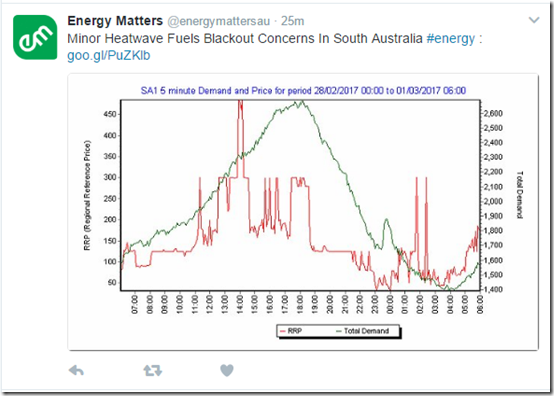
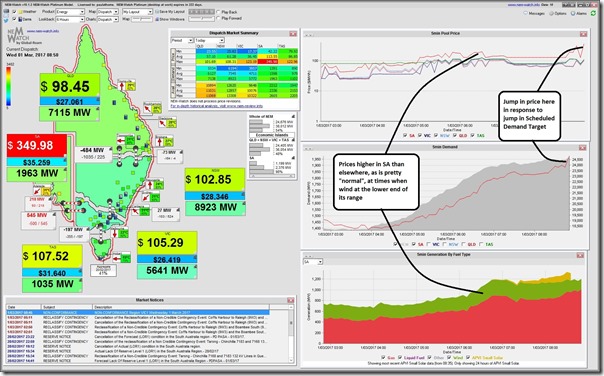
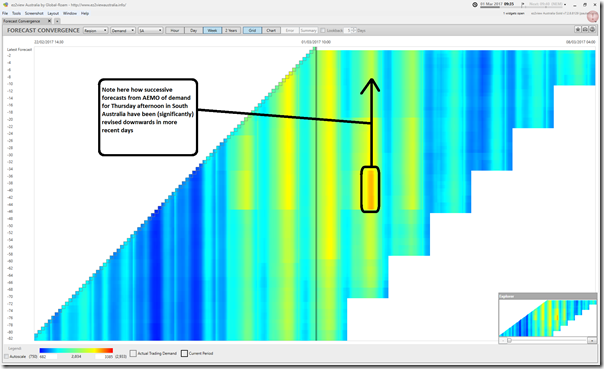
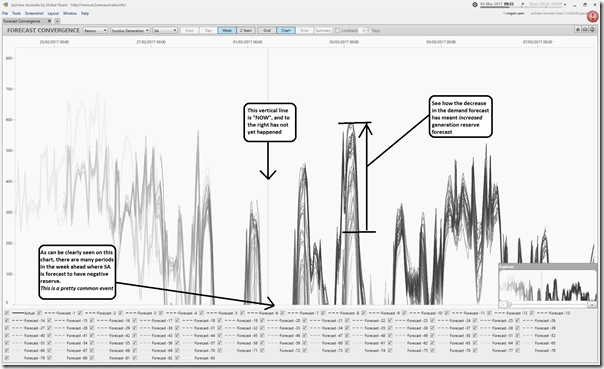
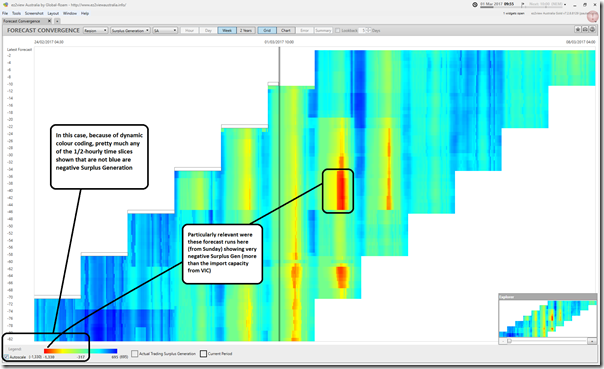
Apparently it wasn’t only the media getting skittish Paul – AEMO directed additional Pelican Point capacity into the market that afternoon despite no sign of forecast LOR2 on the horizon. There was an actual LOR1 declared but reserves were still over 450 MW before the direction.